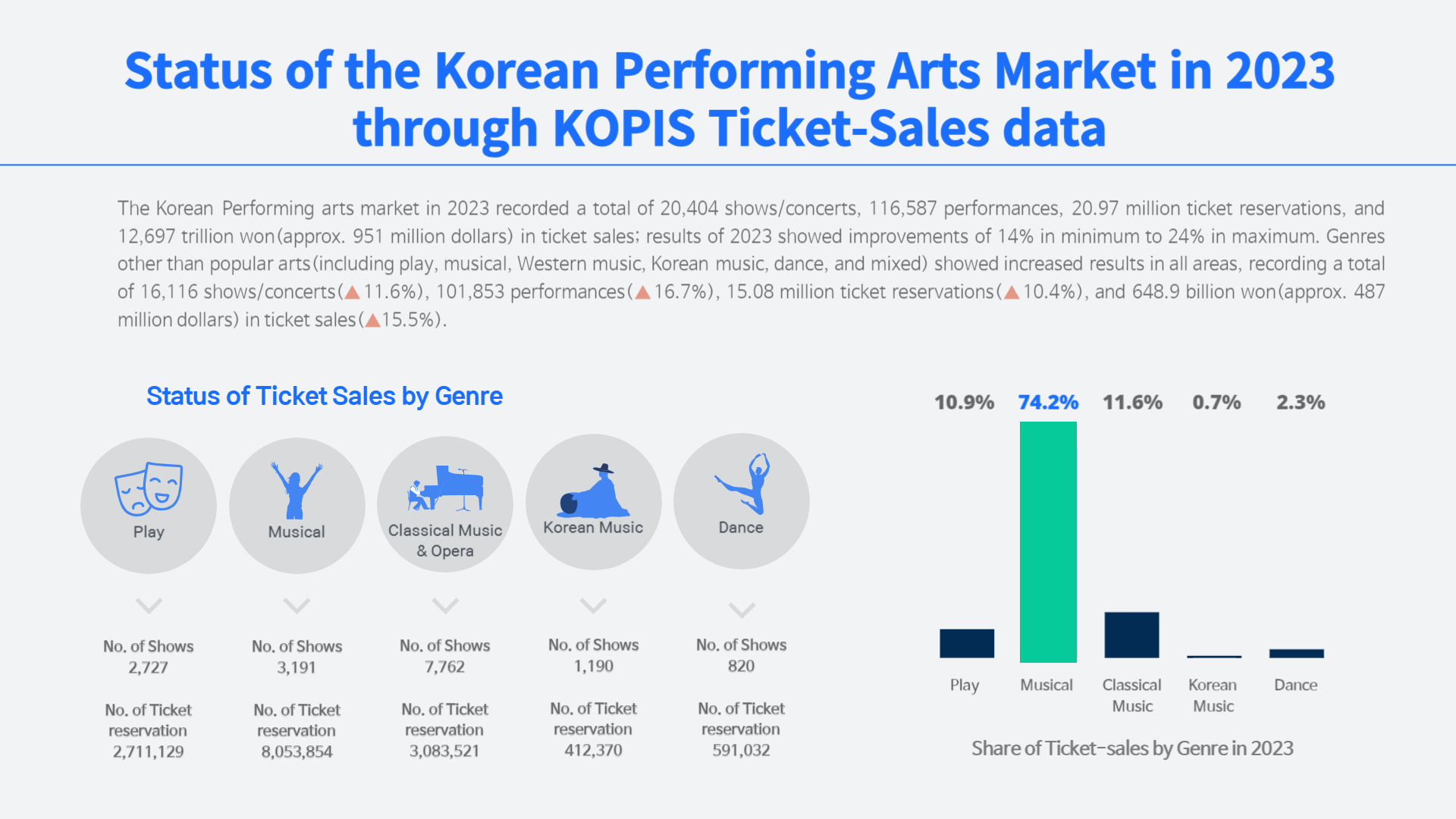New International Mobility for the Performing Arts in the Post Pandemic Era: Next Mobility Part II
Sharing the research process of KAMS Connection and Performing Arts Market in Seoul
Kyu Choi_ Artistic Director of Seoul Performing Arts Festival (SPAF)
Next Mobility is a research project on new international mobility and circulation in the post-pandemic era. Preceded by the previous article, PART I - ‘Background, process and questions of Next Mobility project,’ this article is sharing analysis and findings from individual workshops and research carried out by ten artists and producers.
# Changes and transitions in creation and production
① Analysis of VR and digital performances that have gone beyond online space and move into virtual space
- Rene Hyewon Lee, producer and CEO of Giioii Immersive Storytelling Studio
Performances used to be recorded as videos. However they are evolving into new virtual experiences as technologies advance. Rene has been focusing on that evolution and new forms of technological performances that have emerged as a result. She studied the cases of Dream by the Royal Shakespeare Company (RSC) and other 'XR immersive plays', which invite the audience to three dimensional stages. By doing so, she analyzed VR and digital technologies and shared the changes she identified in creation, circulation and audience experience.
First, as a key task, she suggested how presence, immersion and liveness can be created during the process of creation and production. Then she emphasized creating acting-friendly scenarios and scripts, saying that a script has to be tried out many times during creation before it is completed. In terms of developing the audience and changing the way the audience enjoys the show, she proposed making various programs in forms of pre-show and after-show programs so that the performance can provide differentiated and diversified audience experiences. She also emphasized the importance of making audience guidelines in advance and having a pre-show for those who are not familiar with technology. She has previously categorized the existing audience into five types (observer, wanderer, connector, adventurer and rule-breaker) This suggests that more detailed design is needed in order to keep up with audience expectations and roles which change along with the technological advancements.
② Case study and research of contact-free creative activities
- Kyoung Yun Kang, Team leader at Human in Unlimited Education, an international theater research institute
Kyoung Yun Kang conducted interviews and research on a Zoom theater created by ELENA KUZINA, a Russian director, actor and educator. Through Anton Chekhov's
According to her research, a Zoom theater is a genre of its own that is different from a movie or a play. Therefore, she was able to put together a few new rules for 'contact-free theater.' A Zoom performance delivers its actors' performance to the audience on a screen. In that regard, it is the same as a movie. At the same time, there are many differences when compared to virtual reality or eXtended reality, in which movement is a very important element in acting. The research showed that it is very important to figure out how to convey the energy that actors bring to the performance live, and to use props and lighting to give an effect that reveals the meanings and symbols of the work. It also suggests that theater-makers need to have a discussion with technicians that are newly brought into the work in order to agree upon ground rules and ways of cooperation. In terms of audience and audience experience, it emphasized that a manual is necessary for the audience to enjoy contact-free performance, adding that the audience attitude during the performance also needs to change.
 A presentation slide from case study and research of contact-free creative activities (Courtesy of Kyoung Yun Kang)
A presentation slide from case study and research of contact-free creative activities (Courtesy of Kyoung Yun Kang)
③ A Web of Performance
- Choah Park, Director of Uechoah
Choah Park has been exploring various games, dance performances, VR performances and visual arts that are based on virtual presence on the web. She wondered what new performance senses are in those genres and began her research on that. She borrowed game and movie theories for her research to question whether a sense of live performance can be created in a digital media environment.
The research based itself on Miguel Sicart's game theory to analyze the human body in virtual space and unravel the identity of the game player as a body containing a dual existence. According to Miguel, the skin used by a player in a game represents the gamer themselves and the other at the same time. This means that the player plays the game as himself and experiences the game played by himself at the same time. In her research Choah talks about the main agent in digital media who acts as a performer and audience member at the same time. This person carries out the process as a performer, and experiences the performance as an audience member. This duality creates a unique sensation for those who experience the performance. Choah emphasizes that an online performance must be presented at a certain time in order to provide a sense of liveness. If it is made available at all times in an on-demand format, it will be difficult for the audience to experience the same feelings. She also explored the similar feelings the audience gets as a community between when a performance is presented in a physical venue and when it is presented online. Watching and appreciating a performance is an extremely personal experience that varies between individuals. However, the audience members share the same time and space to experience the same content whether they are online or in a physical venue, and that alone makes connection in between them. Furthermore, this experience-sharing translates into a unique sense of community. Therefore, how to create a connection amongst the audience members that translates into a sense of community can be an important task to figure out.
④ New trend of convergence in the performing arts sector at home and abroad: research on gamification theater
- Jiwon Hong (Independent producer)
Jiwon Hong researched gamification theater as a new trend of fusion in the performing arts sector at home and abroad. A culture of play has permeated our daily lives. Against the backdrop of that social phenomenon, she carried out research on gamification, a use of game characteristics in non-game genres, in order to create a deeper sense of immersion for participants. She introduced a case of successful immersive theater created by a theater company, Punchdrunk. She emphasized how success has ushered in the announcement of theater making that combines game mechanics by using digital technology in 2020, adding that "the future of interactive audience experience in theater lies where gaming and theater cross paths."
The research pointed out that users (audience) participating and becoming players is not only a fundamental goal of gamification but a major characteristic in itself. Her particular focus within gamification was on designing game structures to be audience experience oriented. In other words, adopting game characteristics to draw audience participation and create immersion. When the audience enters the immersive structure, in which theater format and game mechanics are combined, they experience a special theater in which a “game dynamic” is embedded, in other words experiencing the theater as players. In this process of experience, various forms of satisfaction may appear. She called this 'game aesthetic' in the gamification structure. The two big categories of gamification theater are “partial gamification theater”, which uses game elements in a similar way either in part or indirectly and “gamification theater”, which directly and generally combines game structure and theater. Gamification theater can also be divided into hybrid type and convergence type depending on the degree of the combination. Hybrid type refers to a gamification theater in physical space, and convergence type refers to a theater style game in virtual space. She introduced various cases for both types.
 A presentation slide from ‘New Trend of Convergence in the Performing Arts Sector at Home and Abroad: Research on Gamification Theater’ (Courtesy of Jiwon Hong)
A presentation slide from ‘New Trend of Convergence in the Performing Arts Sector at Home and Abroad: Research on Gamification Theater’ (Courtesy of Jiwon Hong)
⑤Theater of Miniature Spaces - Body as a Station, Mailbox and Venue
-Yunkyung Hur, choreographer
Yunkyung Hur is a choreographer who looked into her dance work, Theater of Miniature Spaces for her research. Under the theme of Next Mobility, she looked into what the necessary approaches are for re-creating an online-offline parallel model from various angles.
Physicality is at the center of her research. To find out where the performance is located from the creator’s point of view, she looked inside and outside of the screen, and between the technical equipment and the audience’s sensory organs. Her question in this research was whether mediating the presence of the body can go beyond being a simple delivery; to become convincing as a unique audience experience on its own; to give the audience inspiration about presence of body; or to go even further to become a physical process on its own. Her goal was to discover performance literacy which will allow a site-specific approach to be adopted in the online-offline environment. To that end, she analyzed the following questions that arose based on her experience of premiering the on-offline parallel model of Theater of Miniature Spaces and the experience of creating and watching other art-technology-mediated works.
First, the relationship between body and space, and connection, contact and presence of the body. Second, weakening the hierarchy in the roles of the audience and performers, creating horizontal composition and the status of audience-user. Third, the difficulty in pursuing spontaneousness and improvisation in technology-mediated works. Fourth, what is communication in virtual space? And communication in real space for communication in virtual space. Fifth, in relation to the circulation of choreography scores, performance and subjective interpretation of choreography composed individually after being circulated.
# Changes in forms of audience development, audience experience and consumption #Transition in how circulation and international collaboration is done
⑥ Post-Pandemic, Re-Exploration of Digital Audience Development: Focusing on the Dance Genre
- Soohye Jang, Independent Producer/Founder of Connected A, Eunhye Yang, Director of Studio Grace
This research was jointly conducted by Soohye JANG, a producer and Eunhye Yang, a dramaturg. The aim was to analyze the digital audience and to provide a strategic basis for future digital audience development. It categorized the digital audience of dance based on the data collected since the pandemic started. The analysis is done through data surveys and expert interviews on audience development efforts.
The analysis of the audience trend shows a higher level of participation among young audiences, who are quick to adapt to digital technologies. On the other hand, those who are not accustomed to the digital environment were alienated. It also confirmed that the audience cannot be generalized as their characteristics manifest differently according to the characteristics of each genre or performance. Digital audiences can be categorized according to their eagerness: ① Reader ② Critical Reviewer ③ Casual Talker ④ Technology-based Processor ⑤ Insight Seeker ⑥ Active Learner.
The result of the research showed that there was a big difference in audience experience depending on whether the performance is free or pay-per-view, and whether it is online or in a bricks and mortar venue. One of the positive impacts pointed out by the research is that there are groups of people including the disabled for whom performing arts are not very accessible, and that they can become digital audiences. However, the research emphasizes the need for continuous research and policy support since there is currently no platform that can analyze the outcome from digital audiences.
⑦ A Festival in the Post-Pandemic Era: Is It Possible to Experience a Sense of Collective Immersion in a Non-Physical World?
- Cecilia Soojeong Yi, Head of Content, DMZ Peace Train Music Festival
Cecilia Soojeong Yi explored the future of music festivals in the post-pandemic era. According to her, the sense of collective immersion is one of the great characteristics of music festivals. She investigated whether that is also possible in non-physical, online and virtual worlds.
During the pandemic, music festivals tried to make a quick transition to become 'online festivals.' Concert format has merged with various technologies to create spectacular visuals, but in her opinion so far no music festival has been able to deliver wonders that go beyond what is expected from a physical experience. Then she examined, through looking at cases, how each type allows actors to participate and to make relationships. She also categorized festivals that are digitalized due to the pandemic into three types: online concerts (live streaming), virtual reality and online platforms. There are various actors who usually participate in conventional physical music festivals. These actors are those who used to immerse themselves in the festival together with the performers and the audience while having a closest relationship with them. However, they are not present in an online concert festival. Music festivals in virtual reality can lead to a high level of immersion and provide an enjoyable experience if the organizers pay attention to the details. However, the issues of digital literacy and the instability of technologies remain to be long term obstacles. According to her, network-based festivals on online platforms can be productive considering they can build more efficient and stable personal digital networks. However, there are the issues of time difference and actors’ “entertainment experience” being halved. In addition, staying online makes it feel like it is an extension of work, thus it adds fatigue. She calls for a follow-up research on topics including how to make the actors involved in the music festival, such as artists, audiences, and organizers, feel a bond with each other, and how to induce immersion between actors in situations where actual physical encounters are impossible.
⑧ Cases of international co-productions during the pandemic
- HeeJin Lee, Creative Producer, Producer Group DOT
Borderline is created by a collaboration between Creative Vaqui and Producer Group DOT from Korea and Residenztheater from Germany. HeeJin Lee selected Borderline as her subject for her research on the trend of international collaboration during the pandemic.
Since the beginning of the pandemic, online video conferencing solutions such as Zoom and Google are being universally used. They have become common tools for international contact-free collaboration. In this, there are many stages including the warm up stage and the production stage. For example, joint research between companies or residences is included in the warm up stage. Therefore, planning and producing an international collaboration requires a long-term commitment that lasts a year or two at minimum, or longer. Therefore, if a part of the exchange is carried out contact-free, the amount of international travel can be reduced while maintaining the same level of collaboration. According to her, the use of technology in international collaborations ushered in new possibilities. However, budget increases and instability of the technology are the issues that come with the use of technologies. She pointed out that wider use of technology by the company, capacity building and change of technological environment in the theater have to take place at the same time. She mentioned that reducing physical movement allows international collaboration to become more environmentally friendly. She calls for further research on liveness and actors' presence at the end of her research.
 A presentation slide from ‘Cases of international co-productions during the pandemic’ (Courtesy of HeeJin Lee)
A presentation slide from ‘Cases of international co-productions during the pandemic’ (Courtesy of HeeJin Lee)
#Climate crisis and the mobility of art #Green production and green mobility
⓽ Changes in the Trend of International Exchange and Circulation from the Perspective of Green Mobility
- Jin Yim, Independent Producer
Under the title, "Changes in the Trend of International Exchange and Circulation from the Perspective of Green Mobility" Jin Yim, an independent producer researched on 'mobility," an immediate topic that the art sector is facing in response to the climate crisis. It is a challenge about the sustainability of art and environmental impact that arises from movements for production and touring. Against that backdrop, she laid out concepts of concept touring, deep mobility and green mobility. First, she looked into the 'Concept Touring,' a new way of international collaboration that goes beyond the limitation posed by mobility. It explores what is at the core of an artwork and how we can continue international collaboration while fully respecting that. 'Deep Mobility' is a concept that aims to offset the environmental impact of movement and to take a more comprehensive localization approach by designing a thorough exchange that goes beyond being a simple tour. Lastly, she explained the concept of 'Green Mobility' as a trend that urges environmentally friendly actions while focusing on exchange and movement of the artwork. She defined 'Green Production' as a pursuit of environmental sustainability in the production and distribution process.
She introduced The Theater Green Book's toolkit as an example of green production. She emphasized how this toolkit has adopted the concept of green rider as an action to achieve green production while providing instructions that aim to bring environmentally friendly changes on site. She introduced ‘Perform Europe Insights: Sustainability Through Innovation’, a research report by Perform Europe, an organization that provides mobility support for the performing arts in Europe, in order to show how the policies and trends of touring are transitioning to green mobility by making environmentally friendly efforts.
Lastly, she touched upon the challenges regarding environmental sustainability on a practical level by mentioning that artists, arts organizations and public and private organizations are required to take on creative challenges while fulfilling their respective roles within the arts ecosystem. She added that it is necessary to prepare a new code of practice for the future, to raise public funds, and to provide support at the policy level.
 A presentation slide from ‘Changes in the trend of international exchange and circulation from the perspective of green mobility’ (Courtesy of Jin Yim)
A presentation slide from ‘Changes in the trend of international exchange and circulation from the perspective of green mobility’ (Courtesy of Jin Yim)
So far, we have covered the major research findings of each participant in Next Mobility in 2021. In 2022, Next Mobility will continue to conduct group research and creative idea development research based on the findings and analysis from the research in 2021. Various performances will be pitched at the Performing Arts Market in Seoul. And Rimini Protokoll's performance will be introduced at the Seoul Performing Arts Festival as an international collaboration that takes the format of Next Mobility.
2021 KAMS Connection - Next Mobility research book
Kyu is artistic director of Seoul Performing Arts Festival(SPAF) and is working as creative director at PAMS. With a focus on the major themes of contemporary art, such as ‘diversity and inclusion in art’, ‘art and the city’ and ‘art and technology’, Kyu has developed numerous projects, including creative research residencies, labs and workshops. His previous positions include: Artistic Director and Creative Director for - UK/Korea Season Festival 2017-18; Chuncheon International Mime Festival; Ansan Street Arts Festival. In 2005 he founded AsiaNow productions, in which for over 10 years he worked for Korean theaters in the field of international exchange, while also developing various international co-productions and residency projects as a producer, and dramaturge. Since 2013, he has been working for the Asian Producers’ Platform and APP Camp, a collaborative network of Asian producers for the development of various projects.








 PREV
PREV

.jpg)
.jpg)
.jpg)
.jpg)











